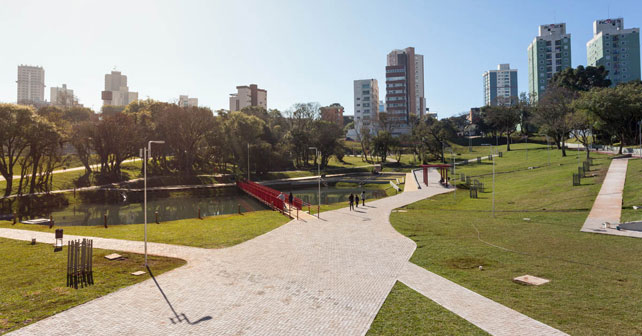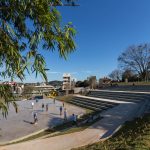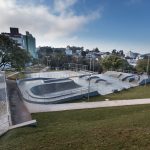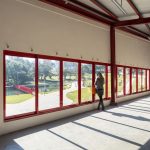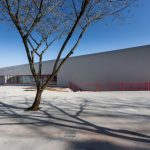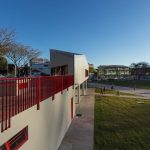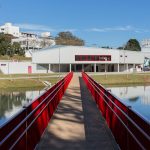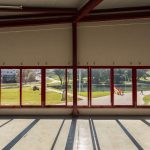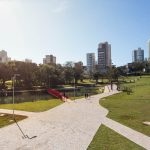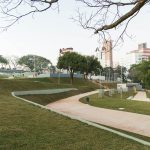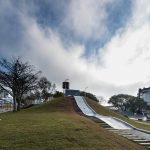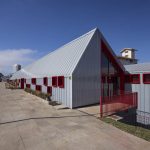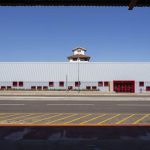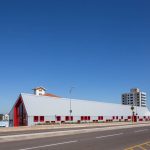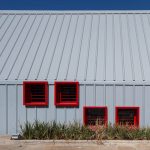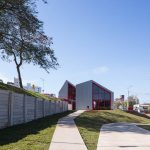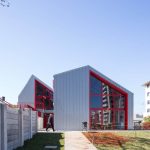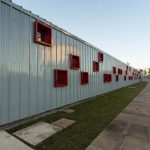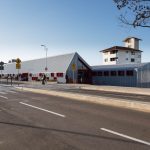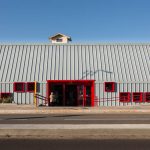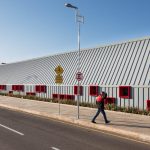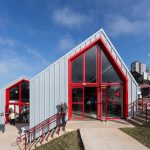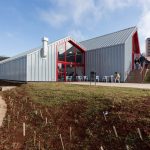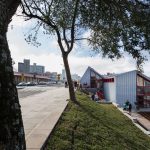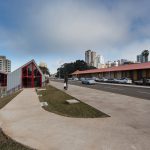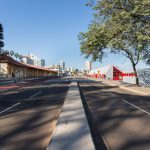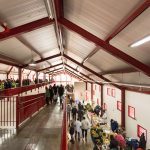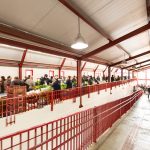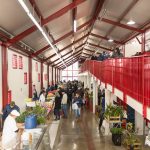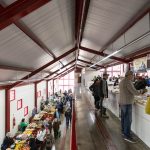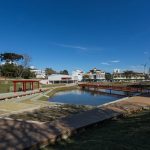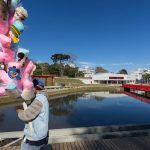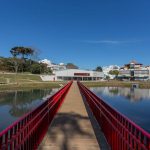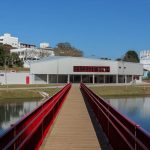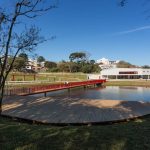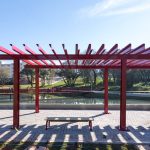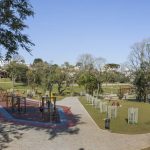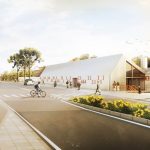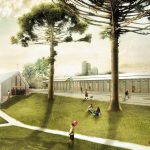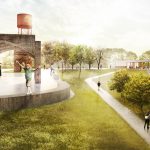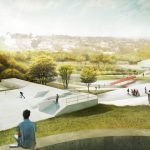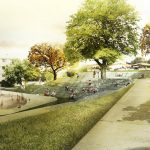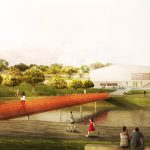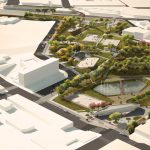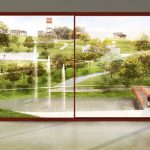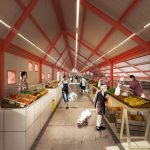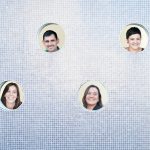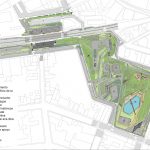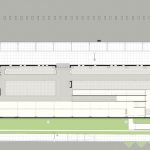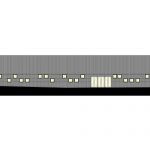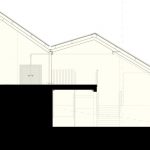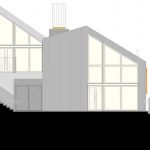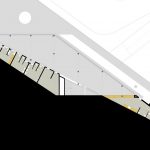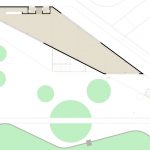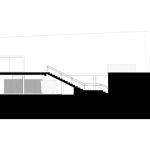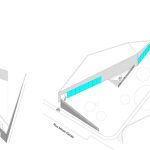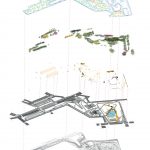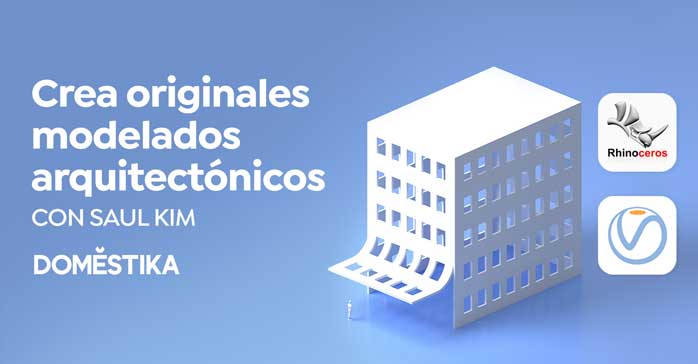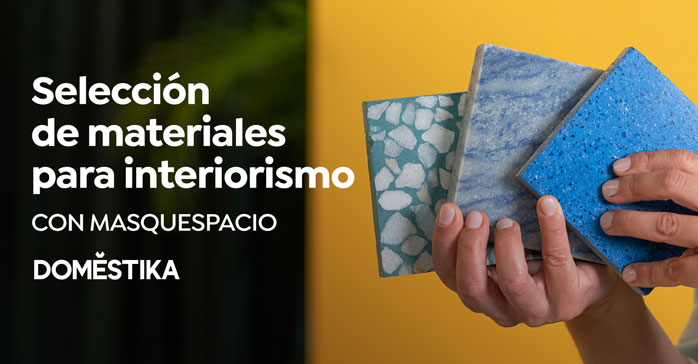Parque da Gare (Passo Fundo, Rio Grande Do Sul, Brasil) por IDOM. El Parque da Gare, creado en los años 80, se sitúa junto a una antigua estación ferroviaria. El estado de abandono en que se encontraba y el hecho de que esté ubicado en pleno centro de la ciudad de Passo Fundo llevaron al ayuntamiento a tomar la decisión de poner en marcha un proyecto de revitalización paisajística y urbanística completa manteniendo algunos aspectos históricos y naturales, pero bajo un nuevo diseño de parque, e introduciendo nuevas infraestructuras.
Este es el caso de la feria del productor, que sustituiría a la que hasta el momento funcionaba en la parcela de la antigua estación, un restaurante con punto de información, que mejoraría las funciones cumplidas por un pequeño bar exterior, una zona de baños y mantenimiento y, por último, un espacio de biblioteca polivalente ubicado en la parte más baja del parque, junto al lago, integrado completamente en el diseño.
El espacio urbano es diseñado para generar tanto áreas de convivencia como de contemplación. La intervención urbana diferencia el interior del parque, donde se utiliza hormigón para la pavimentación, y el exterior, en el que se utiliza piedra de la región, como ocurre en el resto de Passo Fundo. De este modo se genera una relación entre la ciudad y el nuevo parque.
Además, se construyen varios muros de contención, puentes, pasarelas y edificaciones que permiten superar diversas barreras, derivadas de la difícil topografía, y organizar el espacio. En los caminos van apareciendo diferentes materiales: madera, cemento… que organizan espacialmente el parque y sus usos. También se incorporan juegos infantiles y pérgolas.
Paisajismo
El proyecto de paisajismo se basa en la utilización de especies autóctonas. Los ejemplares se escogen según su tamaño, su color y las funciones que deberán desarrollar en cada punto, de modo que haya un control de la sombra y el resultado se ajuste a las decisiones estéticas y espaciales.
El diseño del espacio urbanizado mantiene esa misma intención. Así, junto al lago, se crean pequeñas alamedas de árboles bajos, en sentido Sur-Norte, para reducir la sombra y aumentar la oxigenación de las aguas, y se colocan conjuntos de árboles coloridos para agregar una distinción cromática frente al verde constante.
Partiendo del gran número de árboles preexistentes, se plantan nuevos ejemplares en determinadas zonas con el objeto de generar cierta homogeneidad y de organizar las diferentes áreas.
También se generan espacios cubiertos unicamente con césped que puedan alojar todo tipo de atividades.
Edificio de la Feria del Productor
La Feria del Productor se implanta en una zona de bajada acentuada, con una diferencia de cota entre dos calles de unos cuatro metros. Para salvarla se articula la edificación en dos niveles con diferentes alturas y accesos por rampas y escaleras, haciendo accesibles todos los espacios.
El edificio contiene todo su programa en el interior, debido a las condiciones climáticas de Passo Fundo, y mantiene una relación directa con las dos calles paralelas y con las zonas de estacionamento adyacentes, destinadas a la carga y descarga y a aparcamiento para clientes.
El interior se organiza mediante rampas en tres espacios a diferentes cotas: El primero, en relación con la Avenida Sete de Setembro, está destinado a baños, almacenes y salas de instalaciones. Bajando la rampa nos encontramos con un segundo espacio intermedio donde se ubica la zona de alimentación y que conecta com el acceso Este desde el parque. En la planta inferior se encuentran las zonas de frío y el acceso a la Rua Capitão Bernardo y al área de estacionamento.
La estructura del edificio está compuesta por un sistema mixto de hormigón y metal. La estructura de hormigón se encuentra en el basamento, en contacto con la tierra, y se compone de pilares, vigas, muros de contención y losas prefabricadas.
Sobre ella se apoya la estructura metálica que organiza espacialmente la envolvente del edificio a través de pilares y vigas para los cierres laterales y la cubierta. Así, se genera un gran espacio central abierto, libre de pilares. La cubierta se ejecuta con telas metálicas sobre una estructura de cerchas metálicas y el cerramiento exterior, con lo que se genera una continuidad entre fachada y cubierta.
Las aberturas en la fachada cumplen las funciones de ventilación e iluminación natural. Su disposición otorga cierto ritmo a las fachadas más alargadas.
Las grandes aberturas en la parte superior del edificio generan una continuidad espacial entre interior y exterior.
La biblioteca
La división espacial del terreno en dos niveles en la zona inferior del parque también afecta a este proyecto. De hecho, el pavimento inferior se encuentra semienterrado en la topografía.
La parte inferior del edificio es de hormigón armado. A partir de la losa que la cubre (losa intermedia de la biblioteca) se desarrolla un prisma de forma singular con una estructura metálica y un cerramiento de mampostería que incorpora algunas superficies acristaladas.
La planta baja contiene un núcleo funcional que concentra las zonas húmedas, con baños públicos, la escalera exterior que da acceso a la planta superior y la infraestructura necesaria para la instalación de un pequeño restaurante. Todos estos usos se concentran junto al muro de contención dejando a su lado una gran área cubierta totalmente libre donde pueden celebrarse todo tipo de eventos.
La planta superior se organiza como espacio polivalente, para usos de una biblioteca digital. Cuenta también con un pequeño núcleo de sanitarios y una recepción, y sendos accesos en ambos extremos. Está previsto que se utilice conjuntamente con la plaza existente en la cota superior.
Ficha técnica
Nombre: Parque da Gare
Ubicación: Passo Fundo, Brasil
Arquitectura y paisajismo: IDOM
Coordinador general: Pedro Paes Lira
Gerente: Eugenio Teixeira Borges
Colaboradores: Andreia Faley, Vera Leitão Pinto, Luciana Pitombo, Ana Camila Sanches, Renata Azevedo Lovro, Caio Faggin, Jesús Lázaro
Estructuras: Igor Ortuoste Jayo, Marcos Eanes Santos Souza
Mecánica: Eugénio Durban Quilis
Electricidad: David Alfonso Pastor, Pedro Medina Núñez, Marcus Vinicios Ostwald
Drenaje: María Salve Piñero de Miguel, Marta del Blanco Calderón
Movimiento de tierras: Miguel Faria
Medio Ambiente: Pedro Muradas Montesinos, Encarna Jiménez Monreal, Bruno Turbiani Pereira Dos Santos, Luiz Fernando Amorim
Cliente: Ayuntamiento de Passo Fundo, BID
Año de finalización: 2016
Área: 96.070,40 m2
Área construida: 1.823,2 m2
Fotografía: Marcelo Donadussi
Contacto: http://www.idom.com
English version
The Parque da Gare, created in the 80s, is located next to an old railway station. The derelict state it was in and the fact that it was located right in the centre of the city of Passo Fundo motivated the council to start a project for its comprehensive urban and landscape revitalization keeping some historical and natural aspects, but under a new design for the park and introducing new infrastructures.
This would be the case of the farmer’s market, which would take over the one which had been running on the plot of the old station, a restaurant with an information desk included which would improve the role taken on by a small outdoor bar, a bathing and maintenance area and, lastly, a multipurpose library area located in the lowest part of the park, next to the lake, fully integrated into the design.
The urban area is designed so as to generate both areas for coexistence and contemplation. The urban intervention differentiates the inside of the park, where concrete is used for paving, from the outside, where regional stone is used, as in the rest of Passo Fundo. This creates a link between the city and the new park.
Plus, several retaining walls, bridges, footbridges and buildings were erected in order to overcome some barriers, derived from the complex topography, and to organise the space.
Along the paths, the different materials appear gradually: timber, cement…These spatially organise the park and its uses. Children’s games and pergolas are also incorporated.
Landscape design
The landscape design is based on using autochthonous species. The specimens are chosen according to their size, colour and the functions they’ll have to fulfil at each point, making it possible for there to be a shade control, and the results are in line with the spatial and aesthetic decisions made.
The design of the urbanised area maintains that same purpose. Hence, beside the lake, small boulevards are lined with short trees, in a South-North arrangement, in order to reduce shade and increase the oxygenation of the water and colourful trees are placed to contribute a chromatic difference from the constant green.
Given the high number of pre-existing trees, new specimens are planted in certain areas with the idea of generating a certain homogeneity and of organising the different zones.
Lawn areas are also generated for the hosting of all sorts of activities.
Farmer’s market building
The Farmer’s Market is set in an area with a considerable slope, with a level difference between two streets of around four meters. To get around this, the building has two levels with different heights and stair and ramp access, making all areas accessible.
Given the climate conditions of Passo Fundo, the building houses all its programme inside and keeps a direct connection with the two parallel streets and the adjacent parking zones, which include loading bays and parking for customers. The inside is organised by ramps into three areas at different levels.
The first one, linked to the Sete de Setembro Avenue, is destined for toilets, stockrooms and building services rooms. Going down the ramp we find a second intermediate area where the food is located. It’s linked with the park through the East entrance. The lower level corresponds to the cool area and the access from the Rua Capitão Bernardo and the parking area.
The building has a mixed structure made of concrete and metal. The concrete corresponds to the base, in contact with the soil, and in turn is made up of pillars, beams, retaining walls and prefab slabs. This structure offers support to the metal one, which spatially organises the building’s envelope by means of pillars and beams for the sides and the roof. This generates a great central space, free from pillars. The roof is the result of metal mesh placed over metal trusses and the envelope, thus creating continuity between the façade and the roof.
The openings in the façade serve ventilation and illumination purposes. Their layout grants a certain rhythm to the longer elevations.
The great openings on the upper part of the building generate spatial continuity between the inside and the exterior.
The library
The special division of the terrain into two levels in the lower part of the park also affects this project. In fact, the lower pavement is half buried.
The lower part of the building is made of reinforced concrete. Given the slab that covers it (intermediate slab from the library), a uniquely shaped prism is developed with a metal structure and a masonry envelope that includes some glazed surfaces.
The ground floor contains the functional core that concentrates the wet areas, with public toilets, the exterior staircase that leads up to the upper floor and the required infrastructure for the outfitting of a small restaurant. All these uses are concentrated next to the retaining wall, leaving a great sheltered area beside it which can host all sorts of events.
The upper floor is organised as a multipurpose area, to be used as a digital library. It also includes a small toilets cluster and a reception, and entrances on either side. The idea is for it to be used in conjunction with the existing plaza on the upper level.


